I am having trouble finding a good mini connector for the wires from the tender to the loco. I bought some Miniatronics 2 pin ones from one of the suppliers online but am not happy with them, the wires are too stiff and the connector is bulky. I would like to find something like Spectrum uses on their engines. Any suggestions for either 2 pin or 4 pin connectors?
Bob
Try a computer parts supply company. They have connectors of all sizes.
I use this TCS 6-pin connector in my tender-to-loco DCC installs - there’s more than enough connections for pickup, lights and motor.
Hope this helps,
tbdanny
I sometimes remove most of the outer wrap around the wires and connector head. That way they are more flexible. I’ve also made my own using portions of connector blocks that I got from DCC Installs and Sales.
Richard
I use connectors made from IC (Integrated Circuit) sockets:
http://search.digikey.com/scripts/DkSearch/dksus.dll?lang=en&site=CA&WT.z_homepage_link=hp_go_button&KeyWords=ED3314-ND&x=21&y=18
Here is what you get:
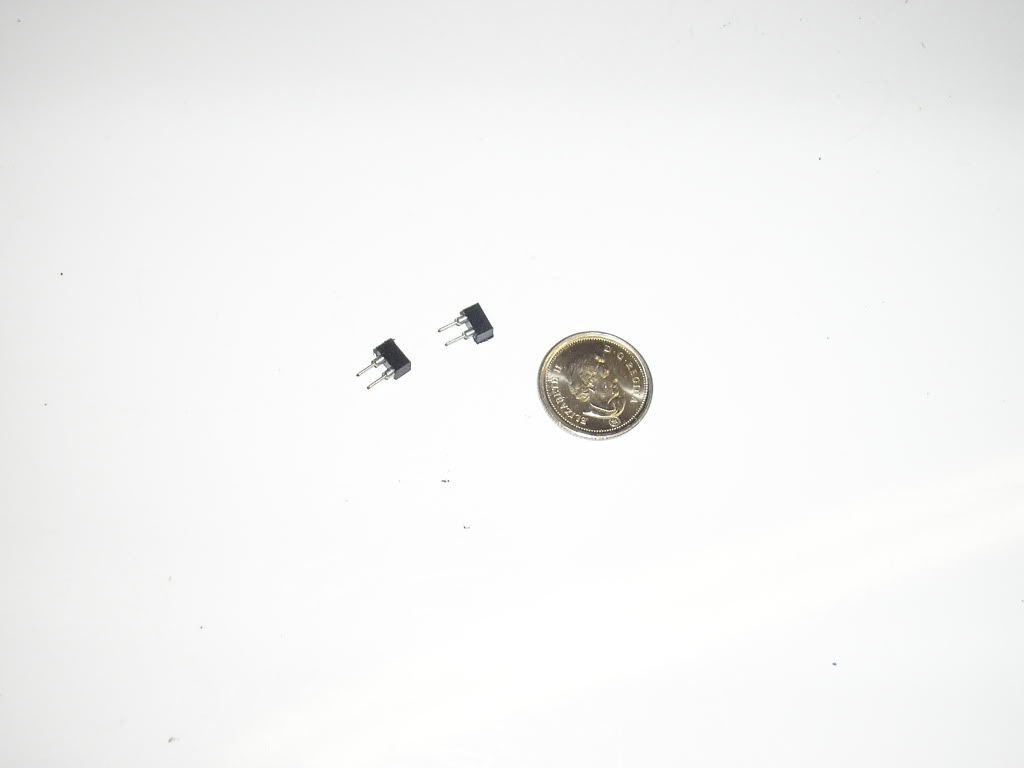
I cut the sockets into 2 pin or 4 pin sections with a razor saw. (Using a Dremel may generate too much heat and melt the plastic). The sections will plug into each other very securely. The female plug can be mounted directly to the locomotive if you wish. You will need some small heat shrink tubing to cover the connector pins on the female side where you solder the wires on. On the male side the wires are simply soldered into the socket holes. Use as little heat as possible or the plastic will melt. You will also need to mark polarity.
Cheap and easy!
Dave
thanks Dave, that is exactly what I am looking for. What is a good source for them and is there a size selection? I was looking at an 8 pin DCC plug today with the idea of cutting it in half, but not sure of securing it to the tender or loco body.
Bob
I guess I shoud have read your entire post, didn’t see the Digikey link??? Thanks again,
Bob
Those are or are very similar to the items I referenced earlier which I get from DCC Installs and Sales. They come in a long flat format where you cut off to the length you want.
Richard
If you have an LHS check there. They often carry a decent selection of connectors.
Bob:
I use epoxy glue to attach the female plug to the back of the loco (or tender if you choose - I don’t think it matters). You can attach it below one side of the cross beam which runs above the coupler with just enough room to allow the coupler to swing (sorry - not sure of the correct terminology for the cross beam). I brought the wires out of the tender on the opposite side from the loco plug. This allows space for an ‘S’ bend between the loco and tender to permit flexibility. I also have done one loco where I only used the female half and then plugged the wires directly into the socket. I soldered the tips of the multi strand wire to make them firm enough to be pushed into the socket. I did this because space was very tight between the loco and tender (it was the ‘critter’ loco shown in my avatar). It is a more or less permanent connection. It will only be disconnected for maintenance to the engine.
Hope this helps.
Dave
P.S. Did you notice the Canadian dime?!?
Richard:
I have also tried using the strip connectors as you suggest. They make for good solid connections but the ones I tried ended up being about twice the size of the IC connectors. I’m not sure if there are smaller sizes available.
Dave
I just ordered some from All Electronics ($.50 ea/8 pin) and will try it. I would think it best to put the female on the engine so it the rare case of the engine having power and the plug disconnected, there is no possibility of the male pins (powered) to touch anything and short. Very rare instance??? I am very anxious to try them out.
Bob
All Electronics is sure fast with their shipping; got the connectors on Saturday and had to see what they were like. I compared them to the NMRA 8 pin pllug and they actually mate with each other?? I cut one into a 2 pin configuration and mounted the female part on the rear of my Big Boy so I could power the backup light I installed. It works out pretty good but I think I will move the fixed end to the tender on the next go-around. I took a few photos of what I did. This is very promising but I need to work on the wires; not happy with what I had on hand.
-Bob
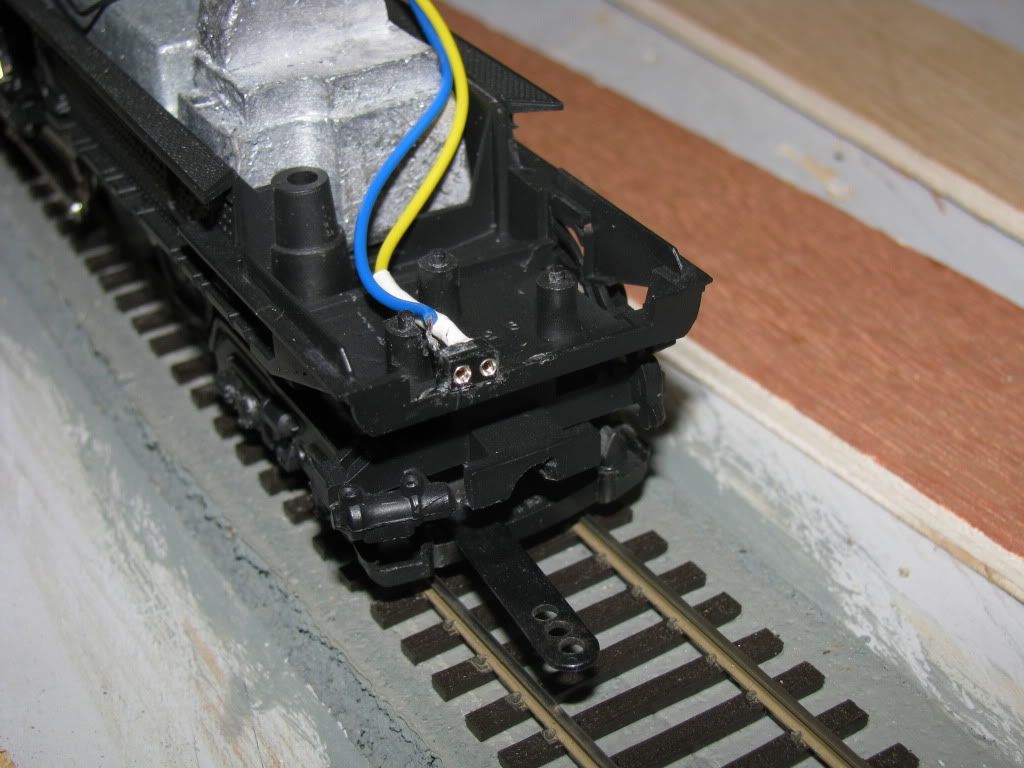
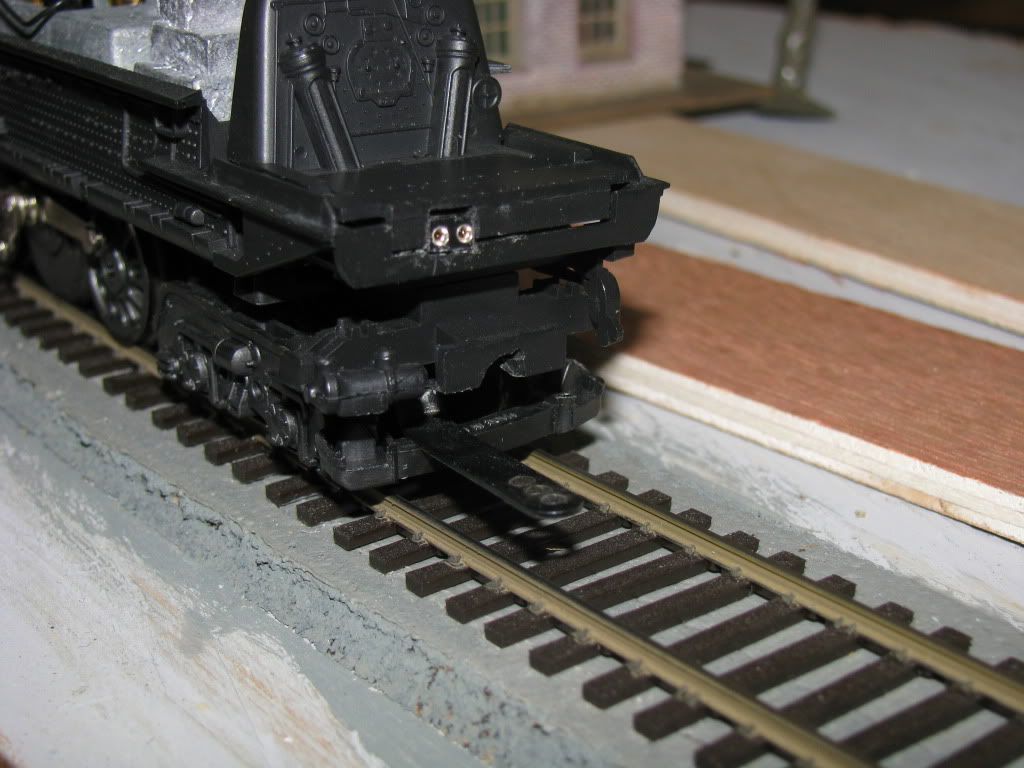
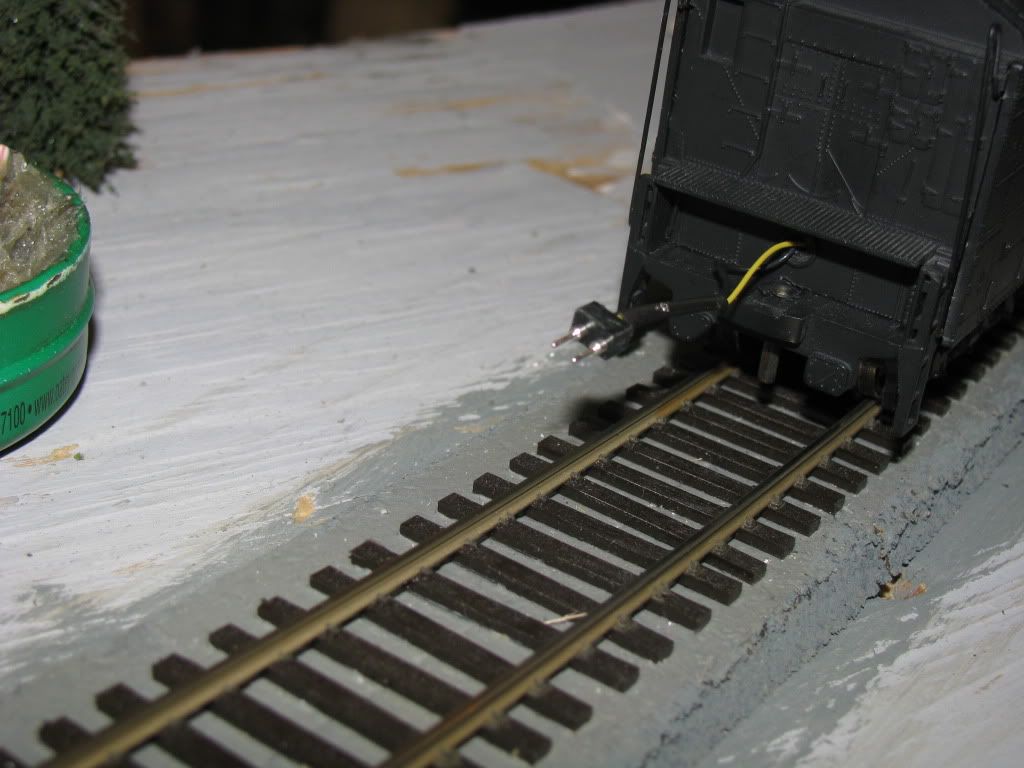
I use ones similar to those used by Dave.
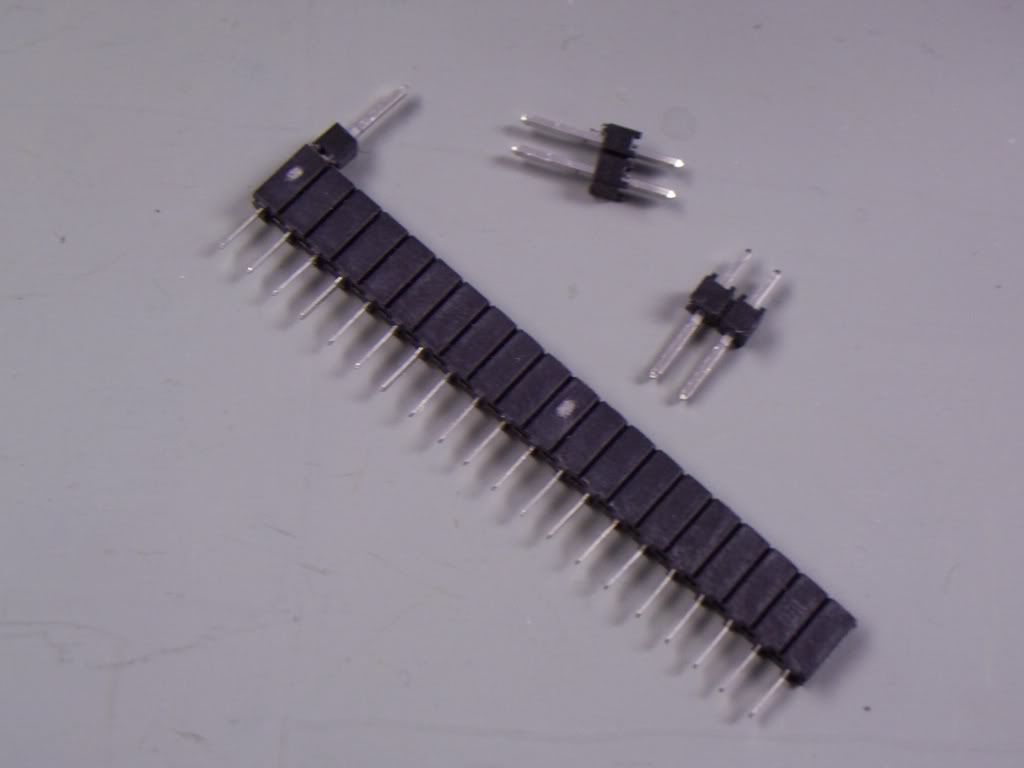
They come in strips of various lengths, male and female in separate packs. I use a utility knife to snick-off the number I need. Both the male and female plugs have an extension out the back end to which you can solder the wire (you can shorten this as required). Use whatever flexible wire you prefer, with some heat shrink at the connector. To indicate polarity, I drill a shallow hole in the plastic of the appropriate mating connectors, then fill it with paint.
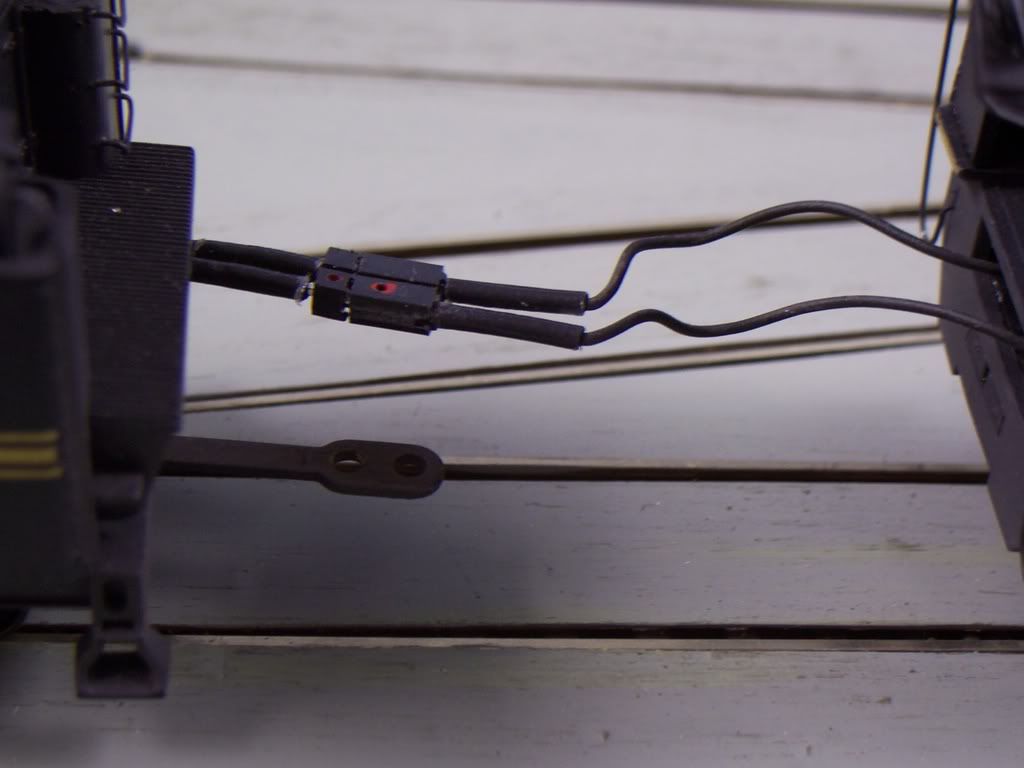
I got mine at Sayal Electronics, although it looks as if they’re in Canada only.
Wayne
Farrellaa:
That looks like a really good installation. I cut my ‘critter’ plug into the back of the locomotive in a manner very similar to what you did.
Just for comparison, I have taken a shot of the IC socket pins and the pins suggested by doctorwayne and Richard. I am assuming that the connectors they are using are the same size as the ones I am showing on the left. Both will work and are very economical.
Dave

Dave,
I think the connectors are the same except for the depth/length of the housing and pins. I plan to relocate my connector on the Big Boy as it is too high and very visable on the loco when connected to the tender. I may try to put it down lower and just above the drawbar. Am also considering mounting it vertically. there are many posibilities, I just picked the first one that looked easiest to perform.
-Bob



